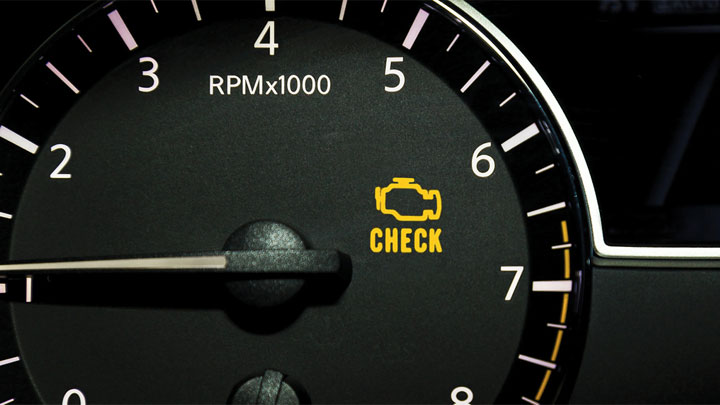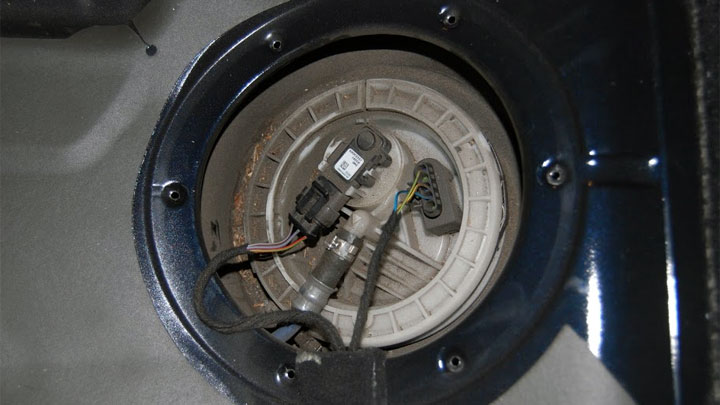5 Symptoms of Low Fuel Pressure (and Possible Causes)
Is your car hard to start, stalling, or just running poorly (especially when under load)? Low fuel pressure could be to blame.
As most of us are aware, adequate fuel is required for the combustion that drives our vehicle’s engines. However, far fewer realize that this fuel must also be delivered within a specified pressure range.
Keep reading to learn the symptoms of a low fuel pressure condition and the most common causes so you can get back on the road.

What’s Considered “Low Fuel Pressure”?
Generally speaking, the vast majority of today’s gasoline-powered engines operate at fuel rail pressures in the range of 45-60 PSI, with the higher end of this range becoming increasingly common over the past decade.
Therefore, fuel pressures lower than 45 PSI are highly suspect. The lower this pressure reading is, the more affected engine operation becomes.
Older carbureted gasoline engines did not require the same higher fuel pressures as today’s fuel injected engines. In fact, carbureted engines seldom operate at higher supply pressures than 5-8 PSI.
Because of that, one could not assume low fuel pressure to be the probable source of their carbureted engine’s issues, until supply fuel pressures dipped below 5 PSI.
Diesel engines are yet another animal altogether. Diesel fuel is not ignited by a spark, such as gasoline, but instead is ignited by the heat generated by compression. In order to achieve efficient combustion, diesel must be atomized upon injection.
Older “pump-line-nozzle” injection systems featured fuel pressures in the range of 45-100 PSI, which was further magnified within each respective fuel nozzle. Today, it is not uncommon for modern “common-rail” diesel engines to exhibit fuel pressures of up to 30,000 PSI.
Low Fuel Pressure Symptoms
A lack of proper fuel pressure generally leads to a host of secondary symptoms, many of which can negatively impact a vehicle’s driveability. Recognizing these symptoms can prove key when attempting to expedite diagnosis and ultimate repair.
The following are several of the most common symptoms related to low fuel pressure conditions.
#1 – Reduced Performance Under Load

One of the first symptoms many motorists notice when their vehicle’s fuel pressure drops abnormally low is a general lack of performance under load. This might manifest as an overall lack of throttle response, or as a noticeable inability to accelerate as normal.
#2 – Intermittent Stalling
When an engine’s fuel pressure drops below a certain threshold, combustion can no longer be sustained. This often results in stalling that occurs intermittently, or otherwise without warning. Such events can happen when at idle, or under a load.
#3 – Starting Issues

Likewise, abnormally low fuel pressures can also hinder an engine’s ability to start as it otherwise should. This occurs when an engine’s fuel pressure is too low to predictably initiate combustion at start-up, thereby resulting in a “no-start” condition.
#4 – Misfire Events
Yet another common sign of lower than standard fuel pressure is the sudden occurrence of seemingly random misfires. These misfires occur when one or more specific cylinders lack adequate fuel pressure to initiate combustion, thereby causing a temporarily dead cylinder.
#5 – Illuminated Check Engine Light

In almost every case, prolonged periods of inadequate fuel pressure will result in the illumination of a vehicle’s check engine light. This most often occurs when one or more of a vehicle’s downstream oxygen sensors detect a lean condition.
This light will remain persistent until the underlying cause of the issue at hand is resolved.
Related: DTC P0087 (Low Fuel Pressure)
Common Causes of Low Fuel Pressure
Low fuel pressure can be caused by one of several underlying issues, some of which tend to be more serious in nature than others. Those familiar with such potential underlying causes tend to be better adept at knowing where to focus their time and energy in the interest of correcting the fault in question.
The following are several of the most common causes of low fuel pressure.
#1 – Restricted Fuel Filters

When a vehicle’s fuel filter(s) become clogged, a restriction within the fuel system itself is developed. This makes it impossible for an engine to achieve its ideal fuel pressure.
#2 – Faulty Fuel Pressure Regulator
If an engine’s fuel pressure regulator were to fail in the “open” position, low overall fuel pressure could certainly result. This occurs as excess fuel is diverted from an engine’s fuel rail, back to a vehicle’s fuel tank.
#3 – Weak Fuel Pump

A weak or faulty fuel pump can also result in a marked reduction in fuel pressure. If the pump in question is unable to generate a suitable pressure, engine performance is sure to suffer.
Failures of this type are relatively common as a fuel pump begins to age.
#4 – System Leakage
Overall fuel system pressure will virtually always suffer when a leak of any degree is present. The most pertinent concern with an issue of this type is the safety issues presented by an external fuel leak.
Therefore, it’s extremely important to park any vehicle with an active fuel leak until it can be resolved.
#5 – Leaking Fuel Injector

On occasion, a fuel injector can fail to seat following an injection cycle. When this occurs, persistent fuel leakage takes place. As a result, overall system pressure can be reduced to the point of causing service failures and driveability-related symptoms.
#6 – Electrical Malfunctions
A general lack of fuel pressure can also be attributed to any electrical failure within a vehicle’s fuel system. Fuel pump relay and breaker/fuse failures are relatively common.
Additionally, wiring/connector damage also accounts for a number of such issues, as do fuel pump control module failures.
Can You Continue Driving With Low Fuel Pressure?
No, you shouldn’t drive if your vehicle is exhibiting fuel pressure-related issues. This stems from the numerous potential ramifications that can result from operating under such circumstances, many of which tend to center around a general lack of driveability.
Attempting to drive in light of lower than specified fuel pressures can result in intermittent stalling, as well as starting concerns, either of which can easily leave one stranded. Issues of this type also pose a very real risk to one’s safety and well-being. Stalling while operating at higher speeds serves as at least one cause for concern.
There are several mechanical concerns that also bear consideration when operating a vehicle’s engine without sufficient fuel pressure.
Lack of sufficient fuel pressure results in a “lean” condition. Prolonged engine operation under lean conditions can lead to the burning of valves and eventual degradation of one or more pistons, all of which can be extremely expensive to repair.
In any event, the root cause of a vehicle’s low fuel pressure condition should be thoroughly diagnosed and repaired at the first available opportunity. Doing so will eliminate undue risk, and possibly prevent costly damage from being incurred.
If you do not feel comfortable diagnosing such issues yourself, or simply do not have the time, an appointment should be made with a trusted automotive service center as soon as possible.
- P0480 Code (Symptoms, Causes, and How to Fix) - Apr 19, 2024
- Car Temperature Gauge Stopped Working? (Here’s Why) - Apr 15, 2024
- Ignition Coil vs Coil Pack (What’s the Difference?) - Apr 8, 2024
